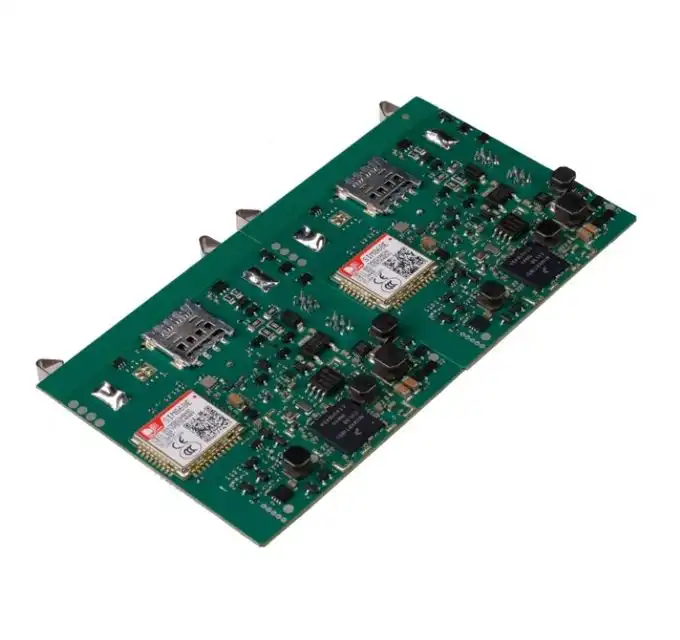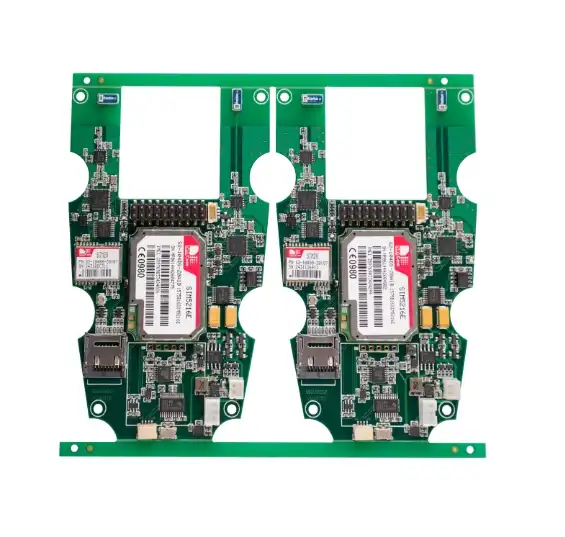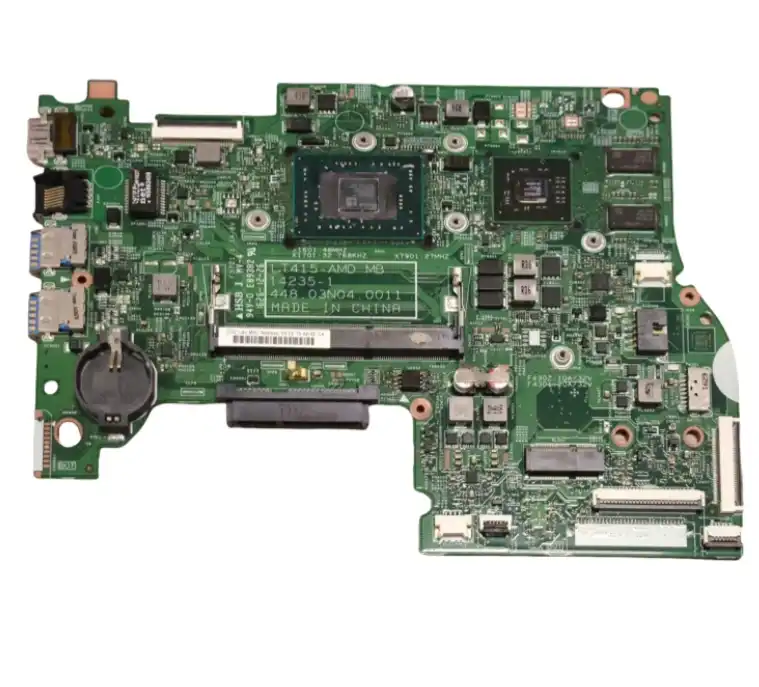Component Procurement: Ensuring Quality from the Start
Supplier Qualification and Management
The foundation of high-quality automotive-grade PCBA begins with sourcing components from reputable suppliers. Manufacturers must implement a robust supplier qualification process, evaluating potential partners based on their quality management systems, production capabilities, and track record in the automotive industry. This process typically involves:
- Conducting on-site audits of supplier facilities
- Reviewing supplier quality control procedures and certifications
- Assessing supplier financial stability and long-term viability
- Evaluating supplier's adherence to automotive industry standards such as IATF 16949
Once qualified, suppliers are subject to ongoing performance monitoring and periodic re-evaluations to ensure consistent quality over time. This rigorous approach helps mitigate the risk of substandard components entering the automotive PCBA supply chain.
Component Traceability and Authenticity Verification
In the automotive industry, component traceability is paramount. Each component used in automotive-grade PCBA must be traceable back to its origin, including manufacturer, production date, and batch number. This level of traceability enables:
- Quick identification and isolation of potential quality issues
- Effective management of product recalls if necessary
- Compliance with automotive industry regulations and standards
Additionally, manufacturers must implement stringent measures to verify the authenticity of components and prevent counterfeit parts from entering the supply chain. These measures may include:
- Visual inspection of packaging and markings
- X-ray analysis to detect inconsistencies in internal structures
- Electrical testing to verify component specifications
- Destructive physical analysis (DPA) for sample verification
Incoming Quality Control
Upon receipt of components, a thorough incoming quality control process is essential. This process typically involves:
- Visual inspection for physical defects or damage
- Dimensional checks to ensure compliance with specifications
- Electrical testing to verify component functionality
- Environmental stress screening for critical components
By implementing these rigorous quality control measures at the component procurement stage, manufacturers lay a solid foundation for producing high-quality automotive-grade PCBAs.
PCB Manufacturing: Precision and Consistency in Production
Design for Manufacturing (DFM) and Design for Testability (DFT)
The journey to high-quality automotive-grade PCBA continues with the PCB manufacturing process. Implementing Design for Manufacturing (DFM) and Design for Testability (DFT) principles is crucial for ensuring that the PCB design is optimized for production and testing. Key considerations include:
- Optimizing trace widths and spacing for manufacturability
- Designing for proper thermal management
- Incorporating test points for in-circuit testing
- Ensuring adequate clearance for automated optical inspection (AOI)
By addressing these factors early in the design phase, manufacturers can significantly reduce the risk of defects and improve overall PCBA quality.
Material Selection and Quality Control
The selection of PCB materials plays a critical role in the performance and reliability of automotive-grade PCBAs. Manufacturers must choose materials that can withstand the harsh environmental conditions typical in automotive applications, including:
- High temperatures
- Vibration and shock
- Humidity and moisture
- Electromagnetic interference (EMI)
Quality control measures for PCB materials include:
- Verification of material specifications and certifications
- Testing of material properties such as glass transition temperature (Tg) and coefficient of thermal expansion (CTE)
- Monitoring of material storage conditions to prevent degradation
Process Control and Monitoring
Maintaining tight control over the PCB manufacturing process is essential for achieving consistent quality. This involves:
- Implementing statistical process control (SPC) techniques
- Utilizing advanced equipment with real-time monitoring capabilities
- Conducting regular equipment calibration and maintenance
- Employing trained operators with expertise in automotive-grade PCB production
By implementing these measures, manufacturers can ensure that each PCB meets the exacting standards required for automotive applications.
SMT Process: Precision Assembly for Automotive Excellence
Advanced Solder Paste Printing
The Surface Mount Technology (SMT) process is a critical stage in automotive-grade PCBA production. It begins with precise solder paste printing, which sets the foundation for reliable component placement and soldering. Key factors in achieving high-quality solder paste printing include:
- Utilizing state-of-the-art stencil printing equipment with closed-loop feedback systems
- Implementing 3D solder paste inspection (SPI) for real-time quality monitoring
- Maintaining optimal environmental conditions (temperature, humidity) in the printing area
- Regularly cleaning and inspecting stencils to prevent defects
High-Precision Component Placement
Accurate component placement is crucial for ensuring proper functionality and reliability of automotive-grade PCBAs. Advanced pick-and-place machines equipped with the following features are essential:
- High-resolution vision systems for precise component alignment
- Multi-axis placement heads for handling a wide range of component sizes and types
- Real-time component verification to prevent placement errors
- Closed-loop feedback systems for continuous process optimization
Additionally, manufacturers must implement rigorous machine maintenance and calibration schedules to maintain placement accuracy over time.
Reflow Soldering and Thermal Profiling
The reflow soldering process is critical for creating reliable solder joints in automotive-grade PCBAs. Key considerations include:
- Developing and validating optimal reflow profiles for each PCBA design
- Utilizing advanced reflow ovens with multiple heating zones for precise temperature control
- Implementing real-time profile monitoring and adjustment capabilities
- Conducting regular thermal profiling to ensure consistency across production runs
Proper thermal management during reflow is essential for preventing defects such as tombstoning, solder balling, and component damage.
Post-Reflow Inspection and Testing
After reflow soldering, thorough inspection and testing are crucial for ensuring the quality of automotive-grade PCBAs. This typically involves:
- Automated Optical Inspection (AOI) for detecting visible defects
- X-ray inspection for identifying hidden defects such as voids in BGA solder joints
- In-Circuit Testing (ICT) to verify electrical functionality
- Functional testing to simulate real-world operating conditions

By implementing a comprehensive post-reflow inspection and testing regimen, manufacturers can ensure that only high-quality PCBAs progress to the next stage of production or shipment.
Conclusion
The secrets of automotive-grade PCBA quality control lie in the meticulous attention to detail at every stage of the production process. From component procurement to the SMT process, manufacturers must implement rigorous quality control measures to ensure the reliability and performance required for automotive applications. By partnering with experienced PCBA suppliers and manufacturers who understand these critical factors, automotive companies can ensure the highest standards of quality in their electronic systems. When seeking an automotive-grade PCBA supplier or manufacturer, look for those with a proven track record in the industry and a commitment to continuous improvement in their quality control processes.
FAQ
What makes automotive-grade PCBAs different from standard PCBAs?
Automotive-grade PCBAs are designed to withstand harsh environmental conditions, including extreme temperatures, vibration, and electromagnetic interference. They undergo more rigorous testing and quality control processes to ensure reliability in safety-critical applications.
How long does the quality control process typically take for automotive-grade PCBAs?
The quality control process for automotive-grade PCBAs can vary depending on the complexity of the design and production volume. However, it generally involves multiple stages of inspection and testing, which can add several days to the production timeline compared to standard PCBAs.
Experience Excellence in Automotive-Grade PCBA Manufacturing | Ring PCB
Ring PCB, with its team of 500+ professionals, offers unparalleled expertise in automotive-grade PCBA manufacturing. Our state-of-the-art facilities and rigorous quality control processes ensure the highest standards of reliability and performance. From PCB fabrication to full turn-key solutions, Ring PCB is your trusted partner for automotive electronics. Experience the difference of working with a leading PCBA manufacturer and supplier. Contact us at [email protected] to discuss your automotive-grade PCBA needs.






